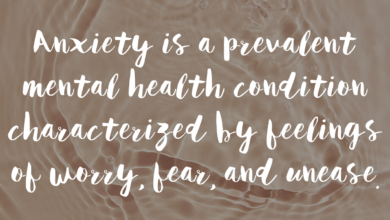How to Find Work-Life Balance as a Therapist — Talkspace

Tips for Achieving Work-Life Balance as a Therapist
Fortunately, there are tools and tips you can use to manage work stress and learn to balance your personal and professional responsibilities better. By implementing the following effective strategies and using the resources available — like Talkspace’s flexible platform — you can find a way to create a fulfilling, professional life that doesn’t negatively impact your personal world.
1. Establish boundaries
Establishing healthy boundaries is the single most crucial part of maintaining a positive work-life balance as a therapist. Setting clear boundaries between your work and personal time can be as simple as doing things like:
- Managing client appointments effectively so they don’t spill into your after-work hours.
- Creating a designated workspace separate from your living space to help prevent a tendency to bring work home.
- Establishing early on with patients your rules about how to contact you, your available hours, and your cancellation policy.
“We need to treat our self-love with the same dedication we give our clients. So we show up for that coffee with a friend, yoga class, or run around the neighborhood like we would maintain our client appointments. It is important to create variation throughout the day rather than reserve a before or after day chunk.”
2. Implement effective time management techniques
Time management techniques are another tool to combat poor work life balance. Managing your time effectively will allow you to do necessary outside-of-work things like self-care activities and personal errands. Effective time management tips include:
- Prioritizing tasks to identify what should be done immediately versus what can wait.
- Delegating responsibilities when possible so you’re not overwhelmed.
- Avoiding over-committing to things that aren’t important to you — learn to say no if something disrupts your balance.
- Making self care a priority and scheduling it into your days so you’re sure to leave time for things like working out, practicing relaxation techniques, doing hobbies you love, and making healthy lifestyle choices (like eating well and getting enough sleep).
3. Seek support and build a supportive network
Trying to navigate challenges alone is a surefire way to throw off a therapist’s work-life balance. Seeking support from colleagues or mentors can help you manage your emotional stress and work challenges. Other opportunities to build a supportive network include:
- Participating in peer supervision or consultation groups to share experiences and gain insights from fellow professionals.
- Engaging in personal therapy to address your own emotional needs and prevent burnout.
4. Utilize technology and resources for efficiency
In today’s digital age, technology can help you streamline your processes to enhance productivity and make care more accessible. It can also allow you to be more flexible with clients’ schedules, offering convenient care via secure text, phone, and video options. Benefits of technology in the mental health field include:
- Using Electronic Health Records (EHRs) to offer secure, efficient management of client records, reduce administrative burdens and eliminate documentation errors.
- Scheduling software to streamline appointment booking.
- Partnering with teletherapy platforms like Talkspace to ensure convenient and flexible patient care options.
5. Cultivate self care practices
As a therapist, you probably preach the importance of practicing self care, but do you follow your own advice? Self care is an integral part of maintaining work-life balance. It can help you compartmentalize the stressors you face daily in your job so you can enjoy your life outside of work to the fullest. Effective ways to practice self care for therapists include:
- Practicing mindfulness exercises — like meditation — to keep you grounded even during stressful daily pressures.
- Spending time doing what you love and what brings you joy, like hobbies or getting together with close friends.
- Dedicating moments for self-reflection every day to enhance your ability to understand your own needs as well as the needs of your clients when you’re at work.
“For my fellow therapists, I recommend some cool go-to self-care strategies. Find a favorite meditation guide – Jeff Warren is one of mine. Schedule a community walk/run that goes to a good cause. Do a cold plunge or take a hot bath, or both. Go to a candlelight yoga flow – CorePower is a favorite. Have coffee/tea or brunch with a friend one day per week.”
6. Recognize & prevent the signs of burnout
For a better work life balance, don’t forget to look out for signs of therapist burnout. Burnout is prevalent in the mental health field. Research by The American Psychological Association (APA) found that 38% of mental health professionals in the United States are working more than they were pre-pandemic — and almost half (45%) reported having symptoms of burnout in 2022.
Burnout symptoms can make being a mental health provider incredibly difficult. Recognizing signs early is key to successful intervention and prevention. Common signs of burnout can include:
- Exhaustion
- Chronic fatigue
- Emotional exhaustion
- Depression
- Apathy
Source link
#Find #WorkLife #Balance #Therapist #Talkspace

